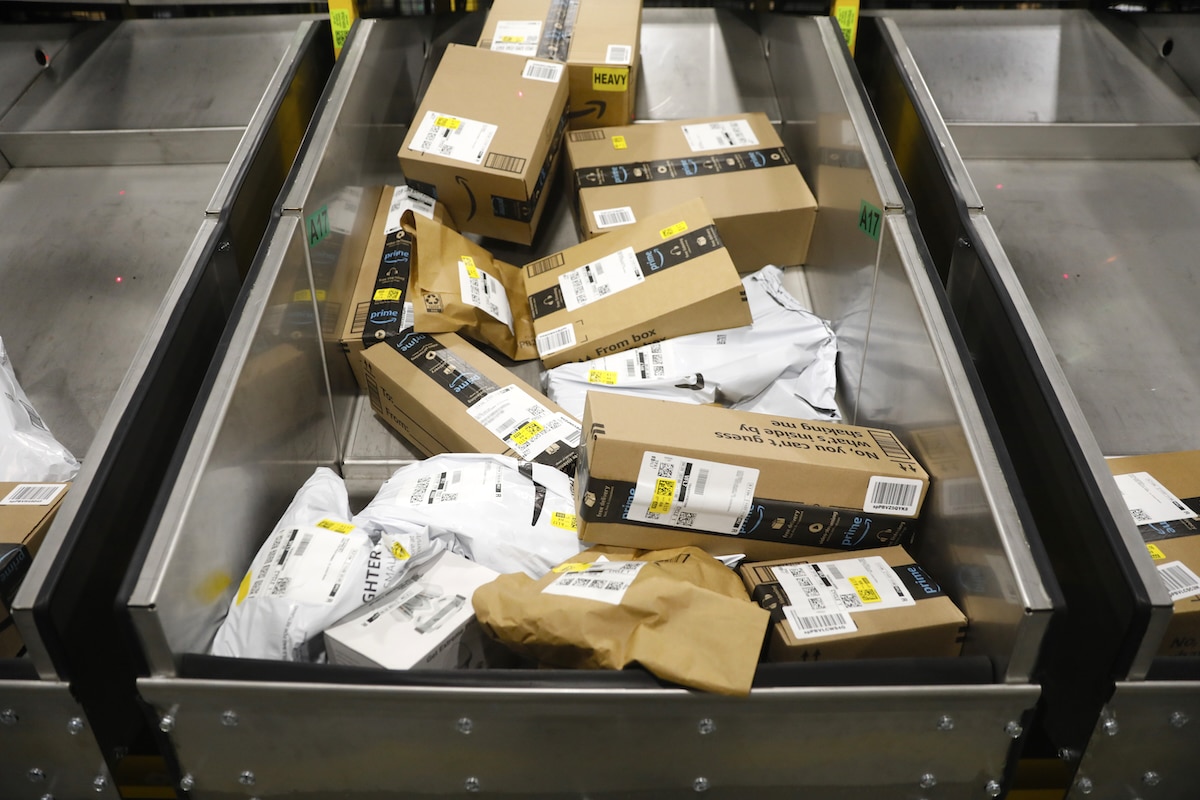Ecowatch
Amazon Has Increased Plastic Packaging in U.S. Despite Global Phaseout: Oceana Report

Packages at an Amazon fulfillment center in Tampa, Florida on Nov. 27, 2023. Octavio Jones / Getty Images

Why you can trust us
Founded in 2005 as an Ohio-based environmental newspaper, EcoWatch is a digital platform dedicated to publishing quality, science-based content on environmental issues, causes, and solutions.
When you order something from Amazon and it arrives, wrapped in plastic inside and out, do you ever wonder, “Why do we use all this plastic?”
A new report by Oceana has found that the amount of waste from plastic packaging produced by Amazon has increased in the United States, even as the online retailer began to phase out plastics in other parts of the globe.
“Amazon’s failure to reduce plastic in the U.S. is troubling. The company has dramatically reduced plastic packaging in other major markets including India and Europe. Why are U.S. customers being left behind? According to research by YouGov, 85% of Amazon customers in the U.S. reported being concerned about plastic pollution. It’s time for Amazon to step up and commit to a global plastic packaging reduction everywhere it operates — including in the U.S.,” said Matt Littlejohn, strategic initiatives senior vice president at Oceana, in a press release from Oceana.
The report, Amazon’s United States of Plastic, estimated that 208 million pounds of waste from plastic packaging were generated by Amazon U.S. in 2022 — a 9.6 percent jump from the 2021 estimate.
The amount of “air pillows” were enough to circle the planet more than 200 times.
“We are swimming in and breathing in this plastic, and this stuff lasts for an eternity,” Littlejohn said, as The Guardian reported. “I don’t think the general public has caught onto how scary this all is.”
In arriving at their calculations, the researchers used available market data that took into account recent communications made by Amazon to the public regarding changes in the corporation’s use of plastic packaging, the press release said. Amazon disclosed a portion of its worldwide plastic packaging footprint for 2021 and 2022, but has not reported its level of plastic use in particular countries, nor all its transactions, including those satisfied by third-party sellers.
Oceana pointed out that a good portion of the online giant’s plastic waste would be deposited along coastlines or ingested by marine species, reported The Guardian.
“This sort of plastic film is a big problem for the oceans and a lot of it can’t be recycled,” Littlejohn said, as The Guardian reported. “Amazon is one of the most innovative companies on the planet. It has eliminated plastic packaging in Europe and they can clearly do so across the U.S., too, even without regulatory pressure. This is a completely solvable problem. They have just got to get on with solving it. They know what to do.”
Amazon said the overall amount of plastic packaging used for shipping orders through the corporation’s global operations network in 2022 had been reduced by 11.6 percent, in comparison with the previous year. This was mostly attributed to Amazon’s efforts at lowering its use of plastic packaging outside the U.S. In Europe, the company said single-use plastic had been replaced with completely recyclable cardboard and paper packaging in all of its delivery areas.
Oceana looked at data on plastic waste pollution from a 2020 study published in Science and estimated that as much as 22 million pounds of global plastic packaging waste from Amazon from 2022 would find its way into the planet’s oceans and waterways.
“Plastic pollution, including the type of plastic used in Amazon’s packaging, is devastating the world’s oceans. Amazon’s plastic packaging is made from the most common form of marine plastic litter in nearshore ocean areas — plastic film — which is also the deadliest type of plastic to large marine animals,” Oceana said.
Amazon shareholders have asked the online merchant to come up with an outline for a company-wide plan to lower its plastic footprint by a minimum of one-third.
Oceana said a plastic packaging phaseout in Amazon’s biggest market, the U.S., would help it accomplish this goal.
“As one of the biggest retailers on the planet, Amazon is increasingly defining how our goods are packaged. The company can solve its plastic problem on a global basis now and into the future if it commits to do so — and follows through,” Littlejohn said in the press release.
Subscribe to get exclusive updates in our daily newsletter!
By signing up, you agree to the Terms of Use and Privacy Policy & to receive electronic communications from EcoWatch Media Group, which may include marketing promotions, advertisements and sponsored content.
Source
Disclaimer: No copyright infringement intended. All rights and credits reserved to respective owner(s).












